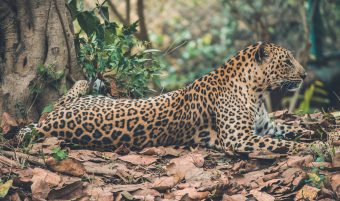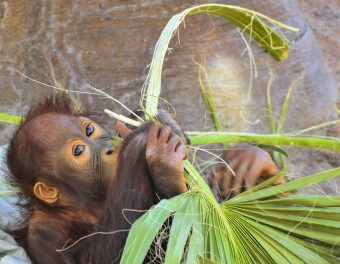
If I remember correctly, 10 a.m. was reserved for watching the series Survival, and every episode of this iconic wildlife show delighted me equally. For a long time, I was convinced that I would become a biologist or a veterinarian, and it was only in my early adolescence that my interest in the humanities was awakened.
Now, I manage to combine both – the love of nature and the love of writing – but I admit that it is difficult to read every day about the awful situation to which we have exposed all these wonderful creatures, thanks to our recklessness and selfishness.
Survival has taught me that nature and its laws are cruel indeed, but humans are crueler. Recently, we marked World Biodiversity Day—a day that should remind us that without healthy ecosystems embellished with biological diversity, people will not have a quality of life, and in some cases, it is safe to say that there will be no life at all.
However, urbanization and the expansion of industry and agriculture are often more important than preserving species’ natural habitats, so there is a high chance that many wild animals will leave us forever in just a few years.
Although the year 2030 is most often mentioned in the context of the transition to renewable energy sources, marking a turning point towards a green future and artificial intelligence, chances are that we will be faced with a very sad reality when it comes to biodiversity. According to the World Wide Fund for Nature (WWF), here are just a few of the favorite animals that are threatened with extinction.
Vaquita
This small marine mammal belongs to the toothed whales. They are also called porpoises or finches because they communicate with other members of the flock with various shrill tones.

The vaquita is the rarest marine mammal, and it is estimated that only ten are left in Mexico. Its extinction is primarily due to illegal fishing, where small vaquitas are mistakenly caught in nets and drowned.
It is also quite surprising that people did not know this irresistible mammal existed until 1958 when it was discovered. We are already facing the possibility of losing it forever.
Amur leopard
Also known as the Siberian or Far East leopard, this powerful member of the cat family is on the brink of survival, with about 200 individuals remaining in the wild.
The Amur leopard used to inhabit the temperate forests of Russia, China and North Korea, but the continuous destruction of its natural habitat has led to a drastic population decline.
Deforestation, road construction, and agricultural expansion have reduced food sources for Amur leopards, and poaching is also a reason this species is on the critically endangered list.
Beauty costs the Amur leopard dearly; even today, poachers hunt them because of their unique spotted fur.
Black rhinoceros
The population of black rhinos, smaller relatives of the African white rhinoceros, declined dramatically in the 20th century due to the arrival of European hunters. By 1995, the number of black rhinos had declined to 2,500, but since then, efforts have been made to prevent the extinction of the species, and the results have been fantastic.
Although the black rhino population is twice as large today as it was 20 years ago, the species is still considered critically endangered, and poaching remains the main threat to its survival.
It is surprising to know that the demand for rhinoceros horns is high even in the 21st century because some people, mainly in China, believe that the horn ground into powder acts as an aphrodisiac and medicine against many diseases, even though its medicinal properties have been scientifically disputed.
Borneo Orangutan
Chances are high that by 2030, we will only be able to see the distinctive broad face of the Borneo orangutan in pictures, as the species’ population has declined by more than 50 per cent in the last 60 years.
Although many campaigns are underway to protect this species, habitat loss is the main reason the population of the Borneo orangutans is dwindling in the rainforest canopy of Borneo.

Their habitat has been reduced by 55 per cent in the last 20 years, and numerous companies still find a way to clear rainforests for their own purposes without suffering the consequences.
According to the latest data, there are about 57,000 orangutans left in Borneo.
African forest elephant
The largest mammal on the planet faced a difficult destiny many centuries ago when man discovered that its bones and tusks could serve various purposes. Now, the African forest elephant, a smaller relative of the more famous African savannah elephant, is first on the endangered list.
According to recent studies, poachers have killed 65 per cent of the world’s remaining forest elephant population in just 12 years, and in the past 100 years, their numbers have declined by 95 per cent.
Forest elephants reproduce more slowly than their savannah cousins, so they cannot recover as quickly from population declines. Their last strongholds are in Gabon and the Republic of Congo, with smaller populations in other African countries, estimated to number around 400,000 today.
Milena Maglovski

